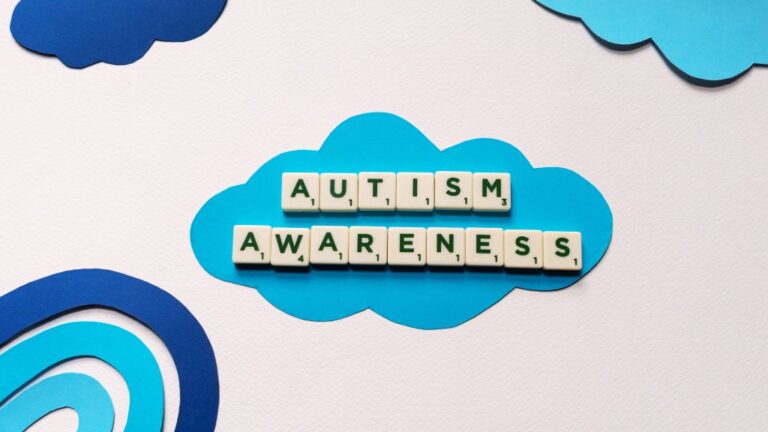Is there a cure for autism?
When receiving a diagnosis of a disease, disorder, or condition, it’s natural to wonder if there is a cure. This concern is no less significant for families who are navigating the challenges of an autism spectrum disorder (ASD) diagnosis for a loved one. One common question that arises in discussions with family, friends, or medical professionals is, “Is there a cure for autism?”
It is vital to recognize that the Diagnostic and Statistical Manual of Mental Disorders does not classify ASD as a disease but rather as a developmental disorder. Consequently, the notion of a “cure for autism” is not applicable in the traditional sense of the word. While no cure for autism exists, various therapeutic options are available to support individuals with autism, helping them live fulfilling lives. This developmental disorder is a lifelong companion for those diagnosed.
However, there is hope. Developmental experts have researched approaches like Applied Behavior Analysis (ABA) for over four decades. These studies illuminate ways to enhance development and learning for individuals on the autism spectrum and are deemed the most effective therapeutic strategy for autism.
In this blog post by ABA Centers of Connecticut, we tackle the frequently asked question, “Does the cure for autism exist?” and present three compelling arguments against this misconception. We firmly believe in the power of caring, compassion, love, and comprehensive engagement, including ABA therapy, to support the well-being and success of individuals with autism and to provide peace of mind for their families. We invite you to discover more about our autism care services in Connecticut by visiting our website.
Defining Autism: Understanding Its Complexity and Addressing Its Challenges
To comprehend why there is no cure for autism, it’s essential first to grasp what ASD entails. The Centers for Disease Control and Prevention defines autism as a developmental disability resulting from differences in brain functioning. Although the precise causes of autism remain partially unknown, scientists acknowledged that genetic differences can play a role in ASD.
Individuals with ASD might display distinct behaviors, communication patterns, social interactions, and learning styles compared to those with neurotypical development. These differences can introduce additional challenges in these areas. Hence, providing support tailored to each individual’s unique needs, such as ABA therapy, is critical.
Autism spans a spectrum, covering a broad array of abilities and challenges. For instance, some individuals with ASD may possess advanced verbal communication skills, while others might be nonverbal. In the same vein, some may achieve a level of independence in adult life, whereas others may require daily support.
It’s essential to recognize that while the traits of autism can improve with appropriate support, individuals will not simply outgrow or cease to have autism. In some rare cases, an individual may cease to meet the diagnostic criteria for ASD. However, continuous support is indispensable in fostering the development and well-being of those on the autism spectrum.
3 Reasons to Dismiss the Idea of a Cure for Autism
Occasionally, you might come across individuals or “professionals” claiming they can provide a cure for autism. It’s critical, however, to be wary of these unfounded assertions. Here are three compelling reasons why there is still no “cure for autism”:
Variability of Causes:
The complexity and variability of autism traits underscore that there’s no singular cause. Research into this disorder has led experts to identify several factors that may contribute to the development of ASD in children:
Genetics: Autism has a significant heritable component. Twin studies suggest that ASD’s heritability ranges between 60 to 90 percent, highlighting genetics as a pivotal factor in the diagnosis of autism. Nonetheless, autism can occur without a family history, possibly due to mutations in the father’s sperm or the mother’s eggs.
Environmental Factors: The National Institute of Environmental Health Sciences has associated various environmental factors with autism’s development. These include exposure to air pollution during pregnancy, certain pesticides, advanced parental age at conception, maternal obesity and diabetes, immune system disorders, extreme prematurity or low birth weight, and childbirth complications that may lead to oxygen deprivation in the baby’s brain.
Hypothetical Theories: There have been attempts to link postnatal factors, such as vaccinations, gastrointestinal problems, and autoimmune disorders, to autism’s onset. However, these theories lack robust evidence, and credible sources have not confirmed this information.
Understanding the Foundations of Autism:
The notion of finding a cure for autism is misguided, as highlighted throughout our discussion. Autism is not an ailment but rather a condition characterized by unique developmental patterns in the brain and altered neural pathways. Suggesting a cure for autism can be perceived as disrespectful within the autism community because it insinuates the need for correction instead of fostering an acceptance of neurodiversity.
The origins of autism are rooted in distinctive brain development involving the interaction of over 1,000 genes, such as:
SHANK3: The mutation of this gene, found on chromosome 22, is closely linked to autism. SHANK3 is responsible for producing a protein that ensures neuron connectivity remains intact.
NRXN1: People with ASD often exhibit variations in the copy number of this gene, which codes for a presynaptic protein crucial for neurotransmitter release.
CHD8: Mutations in the CHD8 gene can heighten the risk of developing autism. The gene plays a pivotal role in gene expression regulation and is vital for brain development.
TSC1 and TSC2: These genes are vital in controlling cell growth and division. Their mutations can lead to tuberous sclerosis, markedly increasing the likelihood of autism.
CNTNAP2: Integral to synapse formation and the advancement of language and communication abilities, mutations in this gene may elevate the risk of autism and associated language impairments typical of ASD.
While ongoing research sheds light on autism-related genetics, the interplay with environmental factors still requires further exploration. Despite advancements in understanding autism’s etiology, the prospect of a cure for autism remains elusive.
Advancements in Therapies for Managing Autism Traits:
Autism research, a field that has only been named and studied for the past century, has seen significant advancements in therapeutic approaches. Among these, applied behavior analysis, introduced in 1968, stands out as a leading method for supporting individuals with autism spectrum disorder.
ABA therapy focuses on developing new skills and modifying behaviors that individuals with autism may find challenging, thereby enhancing their ability to engage successfully in personal and professional spheres. ABA therapists tailor this strategy to the distinctive behavior of each person with autism, decomposing complex skills and behaviors into smaller, achievable tasks. Through techniques like positive reinforcement, individuals are encouraged to accomplish these tasks, promoting the adoption and repetition of positive behaviors.
Extensive research has documented the efficacy of ABA therapy in enhancing communication, social interactions, and behavioral management while mitigating problematic behaviors. It aims to address the specific challenges faced by individuals on the spectrum, amplifying their strengths and abilities instead of looking for a cure for autism.
ABA Therapy and ABA Centers of Connecticut
When exploring options to assist a loved one with autism, conducting thorough research and considering their needs, preferences, strengths, and areas requiring support is essential. It’s critical to acknowledge that although there is no cure for autism, not every therapy suits each individual with autism, underscoring the importance of a holistic approach.
At ABA Centers of Connecticut, our commitment lies in recognizing and addressing the unique requirements of each client. Our objective is to create treatment plans that are not only effective but also promote individual progress. We value the collaborative effort between our professionals and families, thereby incorporating training for parents and caregivers into our therapy plans. This collaboration bolsters ongoing learning for our clients and facilitates necessary adjustments in daily life. We aim to deliver long-lasting outcomes, paving the way for a more inclusive future for the neurodiverse community.
Should you wish to consult with an ABA expert at ABA Centers of Connecticut, please do not hesitate to call us at (844) 395-0448 or contact us online. We are ready to address any inquiries you have regarding ABA therapy and its potential benefits for your loved one.









